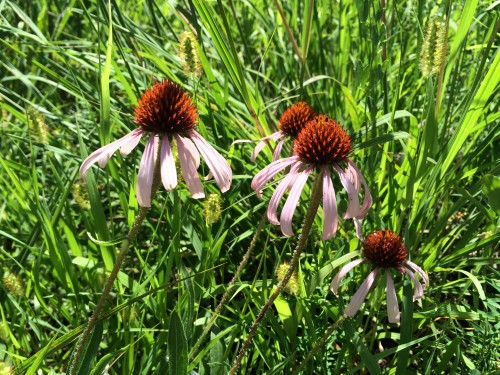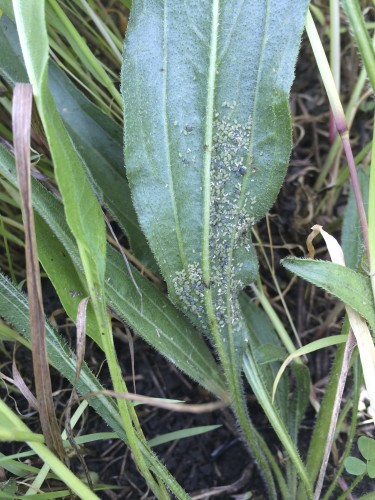With so many of our remnant Echinacea done flowering (less than 300 down from the 2,000 we visited at peak!), this past Tuesday found the team with some extra time on their hands. Instead of starting out with phenology, we got a chance to make progress on our independent projects. Abby and I headed out to p1 to spend some time with the specialist aphid, Aphis echinaceae. For the past few weeks we’ve been applying addition and exclusion treatments to 100 study plants in the plot with the goal of understanding some of the effects of the aphid on its host plant–continuing a study that Katherine Muller began a few years back.
The wet and dewy Tuesday morning marked our seventh round of treatments. Since starting out we’ve learned a lot about handling (“herding”) our aphids–how best to coax them from their colonies, how to keep them happy during the move between leaves, how to get them settled on their new leaves. Aphid transferring is a delicate process that requires patience and a loving touch. Offering words of comfort and encouragement seems to help ease the transition for the aphids.
While we started out with a pretty scarce supply of aphids in the garden, only able to add a couple of aphids to each of our plants and struggling to get colonies to establish, we’ve noticed a recent spike in the population. After managing to apply about 10 aphids to each plant in one of our recent treatments, we finally had some successes. On Tuesday, we found about half of our additions plants with small colonies taking hold.
Some hypothesize that specialist aphids can have a more positive effect on their hosts as compared to generalist aphids. In just a week or two we’ll start assessing our study plants for fitness characteristics like basal leaf count and length of longest leaf, as well as for patterns in herbivory and senescence, to see if years of these addition and exclusion treatments have impacted the plants. I’m excited to move on to this phase of the research!


